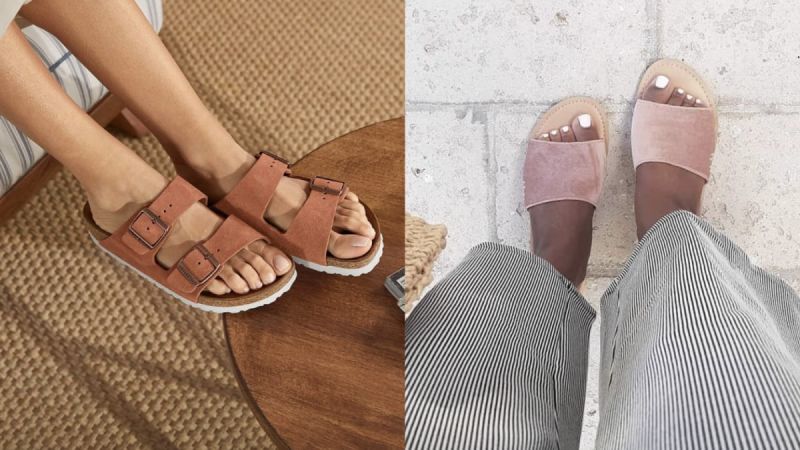What are the key components of a lacrosse stick. How do attack, midfield, and defense sticks differ. What factors should you consider when choosing a lacrosse stick. Which are the top lacrosse stick brands in 2023. How do boys’ and girls’ lacrosse sticks differ.
Anatomy of a Lacrosse Stick: Understanding the Core Components
A lacrosse stick consists of three primary elements: the head, shaft, and mesh pocket. Each component plays a crucial role in determining the stick’s performance and suitability for different playing styles.
The Lacrosse Stick Head
The head is the topmost part of the stick, used for catching, cradling, and throwing the ball. Head designs vary in shape and size, impacting ball control and passing/shooting abilities:
- Narrow heads: Offer precision in passing and shooting
- Wide heads: Provide a larger sweet spot for ball control
- Offset heads: Set lower on the sidewall for increased shot whip
- Straight heads: Deliver a more balanced feel
The Lacrosse Stick Shaft
The shaft extends from the head to the bottom of the stick, serving as the main handle. Various materials are used in shaft construction, each with unique properties:

- Alloy: Durable and cost-effective
- Scandium: Lightweight and strong
- Titanium: Extremely durable but pricier
- Carbon fiber: Offers optimal weight-to-strength ratio
Shaft stiffness and flex also vary, affecting control and shot speed. Stiffer shafts provide more control, while flexible shafts generate higher shot speeds.
The Mesh Pocket
The mesh pocket consists of woven nylon strands connected to the head via strings. It plays a crucial role in ball feel and release. Pocket options include:
- Traditional nylon mesh
- Harder meshes for increased durability
- Turf meshes designed for artificial surfaces
Pocket depth ranges from mid to deep, affecting passing and shooting mechanics. Proper stringing is essential for achieving the ideal pocket and channel setup.
Position-Specific Lacrosse Sticks: Attack, Midfield, and Defense
Different positions in lacrosse require specialized stick designs to meet their unique demands. Understanding these differences is crucial for selecting the right stick for your role on the field.

Attack Lacrosse Sticks
Attack sticks are designed for precision and quick release. Key features include:
- Narrower heads for accurate passing and shooting
- More whip and flex in the shaft
- Offset heads for increased shot power
- Shorter length for improved maneuverability
Midfield Lacrosse Sticks
Midfield sticks balance offensive and defensive capabilities. Characteristics include:
- Wider heads for versatile play
- Slightly stiffer shafts for decent poke checks
- Moderate flex for shot speed
- Medium length for transition play
Defense Lacrosse Sticks
Defense sticks prioritize checking, scooping, and outlet passing. Features include:
- Extra-wide heads for a larger sweet spot
- Stiffer shafts for maximum control during checks
- Longer length for extended reach
- Heavier weight for improved stability
Length and Weight Considerations in Lacrosse Stick Selection
Choosing the right length and weight for your lacrosse stick is crucial for optimal performance. These factors depend on your height, strength, position, and personal preference.
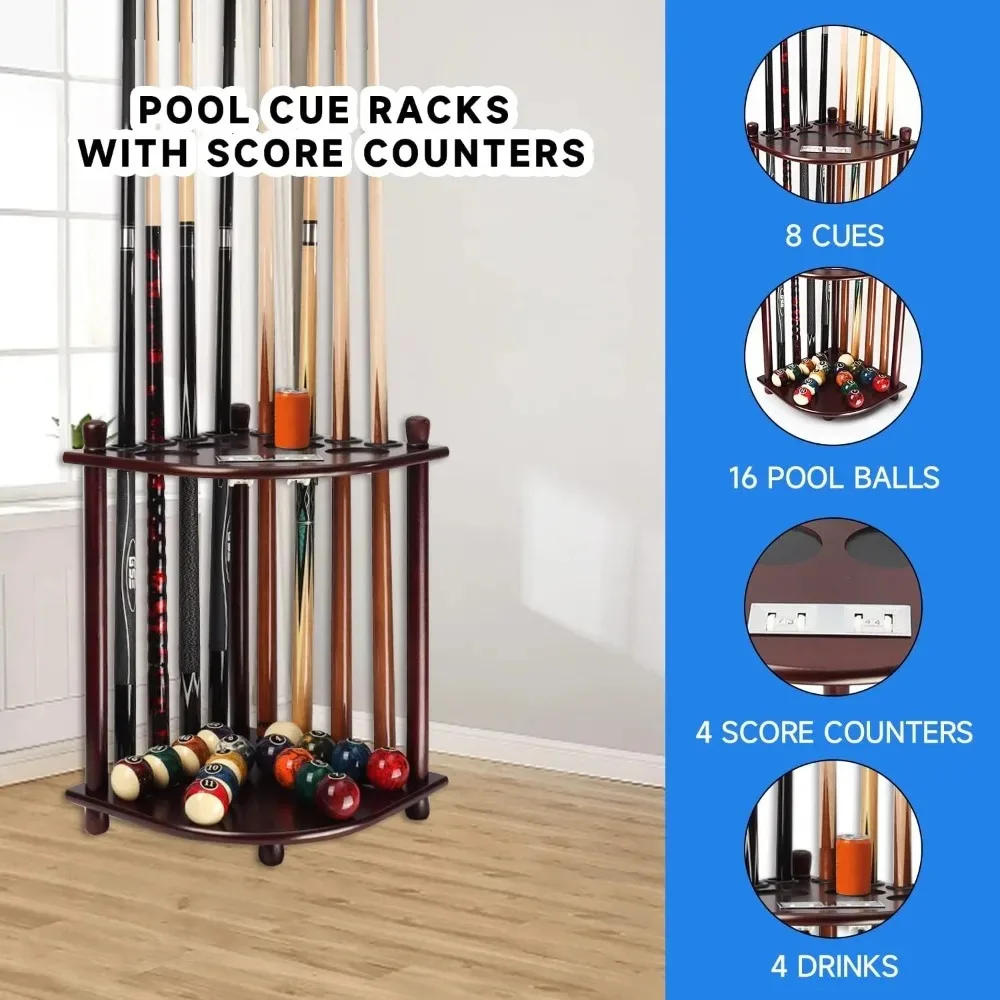
Stick Length Guidelines
Stick length typically correlates with player height and arm span, especially for youth players. Here are general length ranges for different positions:
- Attack: 30-42 inches
- Midfield: 36-42 inches
- Defense: 42-72 inches
- Goalie: 40-72 inches
As players grow stronger, they can manage longer sticks more effectively.
Weight Considerations
Stick weight affects maneuverability and control. Consider these weight ranges:
- Lighter sticks (10-15 oz): Offer quicker handling
- Heavier sticks (15+ oz): Provide more ball control
When selecting stick weight, consider your strength and position. It’s also important to focus on overall balance rather than just total weight.
Boys vs. Girls Lacrosse Sticks: Understanding the Differences
Boys’ and girls’ lacrosse sticks have distinct differences due to variations in game rules and play styles. Understanding these differences is crucial for selecting the appropriate equipment.
Stick Length Differences
Maximum stick lengths vary between boys’ and girls’ lacrosse:

- Boys’ sticks: Max 42 inches (60-72 inches for defense)
- Girls’ sticks: Max 43.25 inches
Head Width Variations
Head widths differ significantly between boys’ and girls’ sticks:
- Boys’ heads: Max width 6.5 inches
- Girls’ heads: Max width 12 inches
The wider heads in girls’ lacrosse maximize ball control for the non-contact style of play.
Pocket Depth Regulations
Legal pocket depths also vary between boys’ and girls’ lacrosse, affecting ball retention and release.
Top Lacrosse Stick Brands in 2023: A Comprehensive Overview
When choosing a lacrosse stick, you’ll encounter various renowned athletic brands. Each company offers unique technologies, designs, and lineup options at different price points.
Maverik Lacrosse
Maverik is known for innovative stick designs, including:
- Kinetik series: Optimized flex and lightweight builds
- Optik series: Excellent for generating speed
STX Lacrosse
STX produces trusted lacrosse equipment, including:
- Surgeon series: Pro-level construction and performance
- Hammer series: Durable and powerful defensive options
Warrior Lacrosse
Warrior offers high-performance sticks, such as:

- Burn series: Excellent offset heads for attack players
- Evo series: Premium carbon handles for enhanced feel
Epoch Lacrosse
Epoch specializes in advanced carbon fiber technology:
- Dragonfly Carbon Pro: Unique flex-fit profiles for added whip
- Integra series: Innovative head designs for improved performance
Price ranges for lacrosse sticks vary widely, from budget-friendly options under $50 to pro-level sticks exceeding $300. Many brands and retailers also offer customization options, allowing players to tailor each component to their preferences.
Selecting the Ideal Lacrosse Stick: Factors to Consider
Choosing the right lacrosse stick involves considering several factors to ensure it complements your playing style and skill level.
Position-Specific Considerations
Your position on the field greatly influences the type of stick you should choose:
- Attack players: Benefit from pinched heads and whippy carbon handles
- Midfielders: Require balanced sticks for versatile play
- Defenders: May prefer wider heads and stiff alloy shafts
Skill Level and Experience
Your experience level should guide your stick selection:
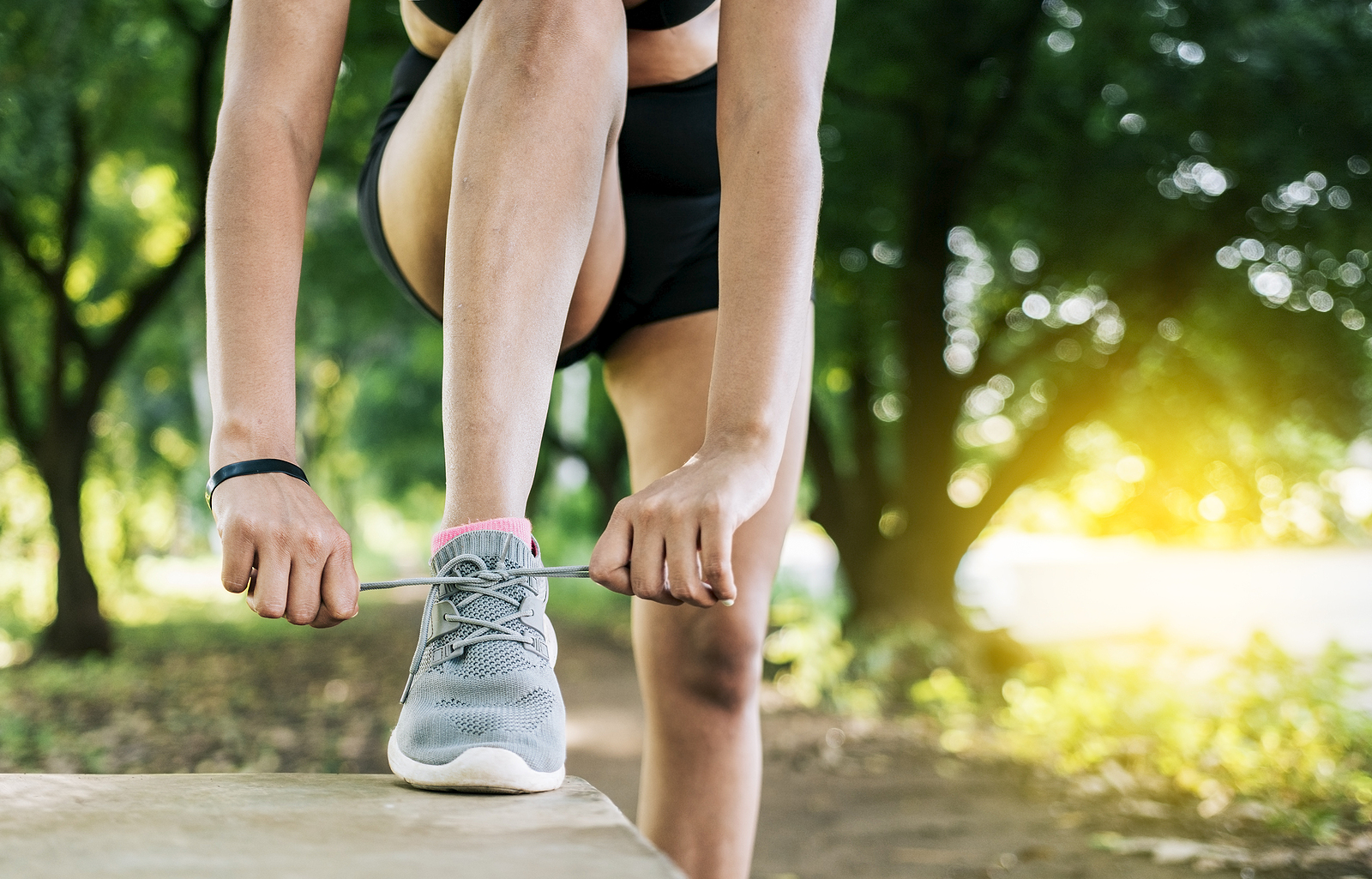
- Beginners: May opt for complete sticks with balanced features
- Intermediate players: Might explore specialized components
- Advanced players: Often benefit from customized setups
Personal Strengths and Weaknesses
Consider how a stick can complement your playing style:
- Strong shooters: Might prefer stiffer shafts for added control
- Agile players: May benefit from lighter, more maneuverable sticks
- Defensive specialists: Could opt for longer, heavier sticks
Budget Considerations
Lacrosse sticks are available at various price points:
- Budget options: Complete sticks under $50 for beginners
- Mid-range: Quality sticks between $100-$200
- Pro-level: High-end sticks $200 and above
Try Before You Buy
If possible, test different stick configurations:
- Borrow teammates’ sticks to feel different setups
- Attend demo days at local sporting goods stores
- Consult with coaches for personalized recommendations
Maintenance and Care: Prolonging the Life of Your Lacrosse Stick
Proper maintenance of your lacrosse stick is crucial for optimal performance and longevity. Following these care tips can help preserve your equipment’s quality and effectiveness on the field.

Regular Cleaning
Keep your lacrosse stick clean to maintain its performance:
- Wipe down the shaft and head after each use
- Use mild soap and water for deeper cleaning
- Allow the stick to air dry completely before storage
Pocket Maintenance
Proper pocket care ensures consistent ball control:
- Regularly check and adjust pocket depth
- Re-string the pocket when it shows signs of wear
- Keep the pocket moist in dry conditions to prevent warping
Storage Considerations
Proper storage helps prevent damage to your lacrosse stick:
- Store in a cool, dry place away from direct sunlight
- Use a stick bag for protection during transport
- Avoid leaving the stick in extreme temperatures
Regular Inspections
Routinely check your stick for signs of wear or damage:
- Examine the head for cracks or warping
- Check the shaft for dents or bends
- Inspect screw holes and end caps for looseness
By following these maintenance practices, you can extend the life of your lacrosse stick and ensure it performs at its best throughout the season.

Advanced Customization: Tailoring Your Lacrosse Stick for Peak Performance
For experienced players looking to fine-tune their equipment, advanced customization options can provide a competitive edge. Understanding these modifications can help you create a stick that perfectly complements your playing style.
Head Customization
Tailoring your lacrosse stick head can significantly impact your game:
- Pinching: Narrowing the sidewalls for improved ball control
- Face shaping: Adjusting the scoop angle for better ground ball pickup
- Throat plug modifications: Altering weight distribution and balance
Shaft Modifications
Customizing your shaft can enhance grip and control:
- Grip tape application: Improving hand placement and feel
- Butt-end customization: Tailoring the end cap for personal preference
- Shaft tapering: Altering flex points for unique shot characteristics
Advanced Stringing Techniques
Mastering complex stringing methods can optimize your pocket:
- Channel creation: Developing a consistent release point
- Whip adjustment: Fine-tuning ball release and shot trajectory
- Custom knots: Enhancing pocket durability and performance
Legal Considerations
When customizing your stick, always ensure compliance with league regulations:

- Verify head dimensions meet official standards
- Ensure pocket depth remains within legal limits
- Check that all modifications adhere to league rules
Remember, advanced customization requires skill and experience. Consider consulting with a professional or experienced player before making significant modifications to your lacrosse stick.
Emerging Technologies in Lacrosse Stick Design
The world of lacrosse equipment is constantly evolving, with new technologies and materials pushing the boundaries of stick design. Staying informed about these innovations can help players make informed decisions when selecting or upgrading their equipment.
Advanced Materials
Cutting-edge materials are revolutionizing lacrosse stick construction:
- Graphene-infused shafts: Offering unprecedented strength-to-weight ratios
- Nano-enhanced plastics: Improving head durability and flexibility
- Bio-based composites: Providing eco-friendly alternatives to traditional materials
Smart Stick Technology
Integration of digital technology is becoming more prevalent in lacrosse equipment:

- Embedded sensors: Tracking shot speed, accuracy, and other metrics
- Companion apps: Providing real-time feedback and performance analysis
- Customizable vibration damping: Tailoring stick feel to individual preferences
Aerodynamic Innovations
New designs are focusing on improving stick aerodynamics:
- Wind-tunnel tested head shapes: Reducing air resistance for faster shots
- Streamlined shaft profiles: Enhancing overall stick speed and control
- Optimized string holes: Improving airflow through the pocket
Personalization Technologies
Advancements in manufacturing are allowing for greater customization:
Lacrosse Stick Anatomy – Head, Shaft, Mesh
When it comes to lacrosse sticks, there are three main components – the head, the shaft, and the mesh pocket. Understanding the anatomy of a lacrosse stick is crucial for finding the perfect setup for your needs and playing style.
The head of the stick is located at the top and is used to catch, cradle, and throw the ball. Heads come in various shapes and sizes, from narrow to wide, which affect ball control and passing/shooting abilities. Offset heads are set lower on the sidewall for more whip on shots while straight heads offer a more balanced feel.
The shaft runs from the head to the bottom of the stick and serves as the main handle. Materials like alloy, scandium, titanium, and carbon fiber impact the weight, stiffness, and durability. Stick flex and stiffness also vary – stiffer shafts offer more control while more flexible shafts generate shot speed. Popular shaft brands like Epoch Dragonfly and Maverik Kinetik have optimized flex profiles.
Finally, the mesh pocket consists of woven nylon strands connected to the head via strings and determines ball feel and release. Pockets range from mid to deep, which changes passing and shooting mechanics. You can also choose between traditional nylon mesh, harder meshes for more durability, and turf meshes for artificial surfaces. Proper stringing is key for getting the ideal pocket and channel set up.
Attack vs Middie vs Defense Sticks
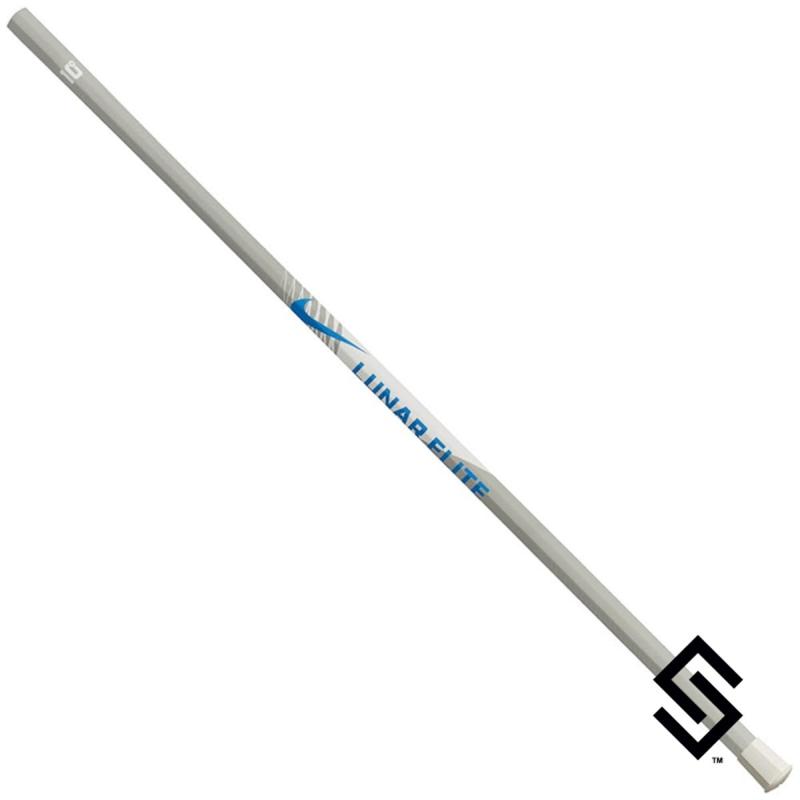
Due to the different demands of each position, attack, midfield, and defense sticks have evolved specialized designs.
Attack sticks have narrower heads for precision passing and shooting, along with more whip and flex. They allow quicker release and accuracy on shots but don’t offer as much defensive prowess. Offset heads are popular for attack.
Midfield sticks balance both offensive and defensive capabilities with wider heads for all-around play. Slightly stiffer shafts allow decent poke checks while still offering some shot speed. They’re excellent for transition play.
Defense sticks maximize defensive skills like checking, scooping, and outlet passing. Extra-wide heads provide a larger sweet spot and prevent ping-ponging during checks. Stiffer shafts give maximum control when poking or lifting on checks.
Length, Weight Considerations
Stick length and weight are other key factors that depend on your height, strength, position and personal preference.
For youth players, stick length usually correlates with height and arm span. Attack sticks range from 30-42 inches, middies 36-42 inches, defense 42-72 inches. Goalie sticks are 40-72 inches. As you get stronger, longer sticks become manageable.
Stick weights also vary – lighter sticks around 10-15 oz are quicker while heavier sticks above 15 oz provide more ball control. Consider your strength and position when choosing weight. Also focus on overall balance rather than just total weight.
Boys vs Girls Sticks
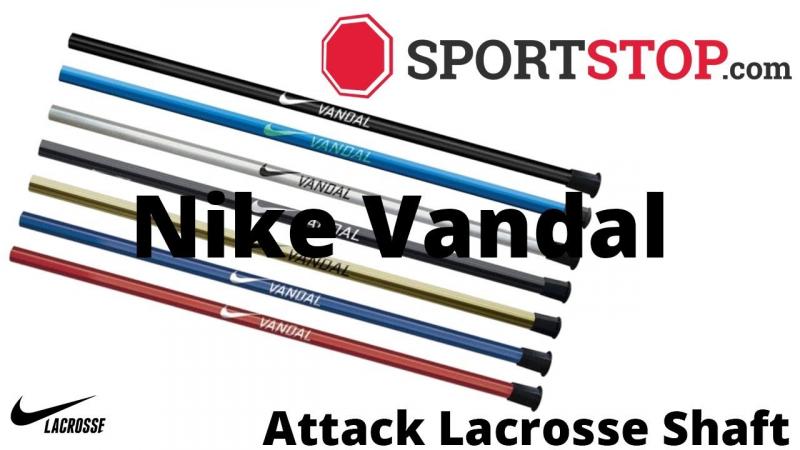
Boys and girls lacrosse feature different stick dimension rules. Boys sticks max out at 42 inches (60-72 inches for defense) while women’s sticks max at 43.25 inches.
Additionally, girls’ heads are considerably wider up to 12 inches compared to 6.5 max width for boys. This maximizes ball control for the non-contact women’s game. Legal pocket depths also differ between the men’s and women’s game.
Top Lacrosse Stick Brands
When selecting your lacrosse stick, you’ll be choosing from various top athletic brands like Maverik, STX, Warrior, Brine, and Epoch. Each company offers unique technologies, designs, and lineup options at different price points.
Maverik sticks like the Kinetik and Optik provide optimized flex and lightweight builds perfect for generating speed. STX makes trusted staples like the Surgeon series with pro-level construction. Warrior burners have excellent offset heads and premium carbon handles. Epoch lacrosse shafts like the Dragonfly Carbon Pro have unique flex-fit profiles to add whip.
No matter your budget, you can find well-designed sticks at lower price points while pro-level sticks go up to $300+. Play around with different heads, shafts, and brands to see what feels right for your game. Many brands and retailers also let you customize each component.
Choosing What’s Right For You
Considering your position, skill level, strengths/weaknesses, and budget will help determine the optimal lacrosse stick setup.
For example, advanced attack players benefit from pinched heads for accuracy plus more whippy carbon handles for shot speed. Beginner defense may opt for wider heads for checking range and stiff alloy shafts for control. Budget buyers can find lightweight complete sticks under $50 to start out.
If possible, try out teammates’ sticks to get a feel for different configurations. Consult your coaches for tips based on areas you need to improve. Leverage expertise at lacrosse specialty shops to test out gear. An ideal stick ultimately comes down to personal feel and performance.
Once you’ve purchased your stick, constantly maintaining pocket shape and replacing worn mesh maximizes longevity. Master stringing tricks and adjustments to get the channel, whip, hold, and release exactly how you like. Break in the pocket properly over time and keep the stick protected during storage and transport.
With the right lacrosse stick that suits your game, you’ll have the tools to elevate performance on the field. Use this complete guide on anatomy, features, and brands as you search for your perfect setup this season and beyond!
When it comes to lacrosse, having the right stick is essential. Your lacrosse stick, comprised of the head and shaft, is your primary piece of equipment on the field. With so many options on the market, finding the perfect stick can be a challenge. This complete guide breaks down how to select the best lacrosse shaft and head to match your position, skill level, and preferences.
Attack, Midfield, Defense – Stick Differences
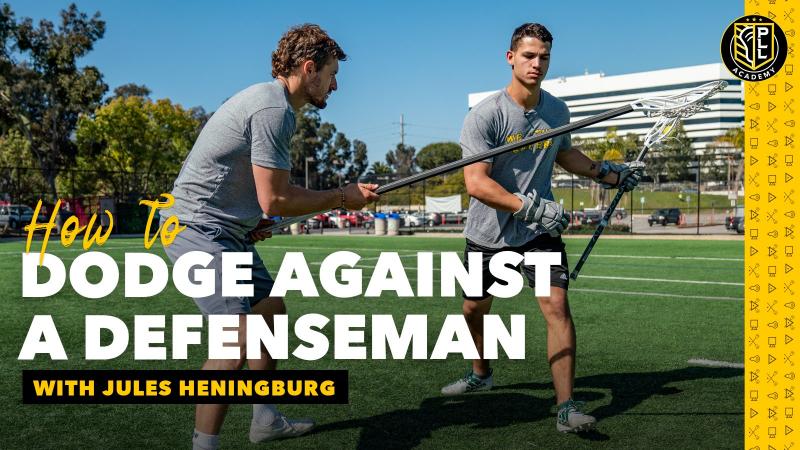
The type of stick you need largely depends on the position you play. Attack players tend to use shorter sticks for improved ball control and passing. Midfielders need a stick with balance between offense and defense capabilities. Defense players favor longer, sturdier sticks to intercept and check opponents.
Attack sticks range from 60-72 inches in length. They have narrower heads for precision passing and shooting. Attack shafts are lightweight for quick maneuvers in tight spaces. Attachable shooting strings allow adjustments to passing and shooting pocket styles.
Midfield sticks are the most versatile, with lengths from 60-72 inches. Midfield heads have moderate width and depth for all-around performance. Shafts provide a blend of lightweight feel and durability to transition from offense to defense. Adjustable sidewall stringing caters pocket style to a midfielder’s preferences.
Defense sticks are the longest, measuring from 72-84 inches. Their extra length allows wider checking angles to intercept passes and ball carriers. Defensive heads have wider scoops for ground balls and greater ball retention on checks. Shafts have thicker walls and more durability for physical play.
Finding the Best Lacrosse Shaft
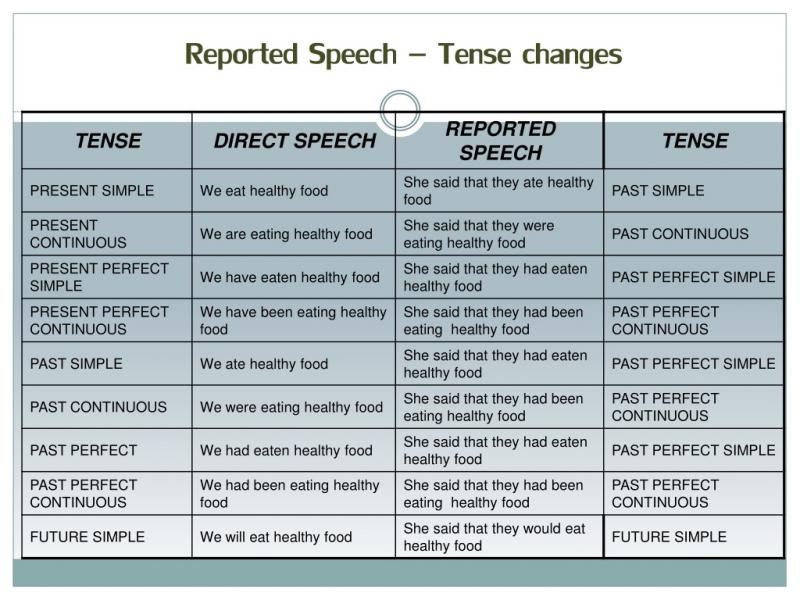
Your lacrosse shaft connects to the head and serves as the primary handling part of your stick. Keep these key factors in mind when selecting a shaft:
- Material – Common options are metal, composite, or titanium alloy. Metal offers durability but can dent. Composite is lightweight yet strong. Titanium combines strength and lightness.
- Weight – Lighter shafts are better for quick maneuvers, while heavier shafts provide more ball control.
- Flex profile – Look for flex ratings to match your position and preferences. More flex helps add velocity to shots.
- Grip – Wrapped, molded, or textured grips ensure control. Replaceable grips allow customization.
- Length – Midfielders do best with 30-32 inch shafts. Attack need shorter 28-30 inch shafts. Defenders need 32 inch and up shafts.
Top-rated all-around shafts include the Epoch Complete 60 inch and the Maverik Wonderboy. These provide an ideal blend of weight, flex, and durability. Attack players may opt for lighter options like the StringKing Type 3F. For defense, the Warrior Burn Pro brings excellent strength and improved checks.
Choosing the Best Lacrosse Head
Your lacrosse head holds the pocket and greatly impacts handling, passing, catching, faceoffs, and shooting. Assess these factors when selecting a head:
- Materials – Plastic/nylon blends are stiff yet lightweight. Metals like titanium offer increased durability.
- Weight – Lightweight heads provide quick release passes and shots. Heavier heads maintain ball control through checks.
- Offset/Angle – Higher offsets increase pocket depth for more ball control. Lower offsets have quicker release passes.
- Scoop – Wider scoops improve ground ball pickup. More defined scoops increase ball retention.
- Sidewalls – Taller sidewalls widen the pocket area for greater ball control.
- Pocket style – Wider pockets maintain possession, while narrow pockets have quicker release.
For attack, heads like the ECD Rebel OG provide excellent ball control for dodging defenders. The STX Crux 300 offers quick release and accuracy needed at attack. At midfield, heads like the Maverik Optik cater to all-around play. For defense, the Warrior Regulator maximizes ground ball pickups and checks.
Putting Together Your Complete Stick
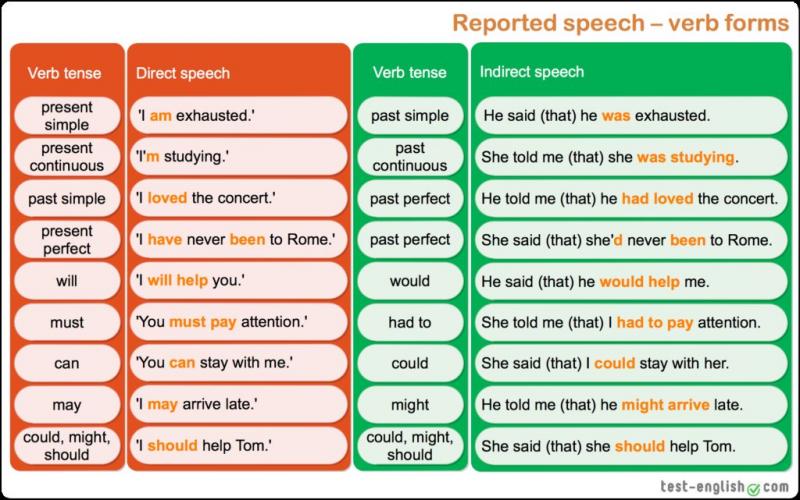
Once you’ve selected the ideal shaft and head, it’s time to combine them into your complete stick. Follow these steps for proper assembly:
- Use a lacrosse head press or vise to evenly push the head onto the shaft.
- Align the shaft so the grip is in your bottom hand area.
- Thread a screw through the designated head hole and shaft to secure.
- Weave pocket nylon through the sidewall holes and tie off.
- Install any additional accessories like shooting strings or grip tape.
- Check overall balance and make any length adjustments as needed.
Testing your complete stick before game use lets you perfect the pocket style, flex, and handling. Break it in by passing and shooting to get a feel for the shaft, head, and pocket together. Making small tweaks ensures your stick matches your playing style.
Equipping yourself with the top lacrosse stick provides a key advantage out on the field. Keep this guide in mind as you shop for a new shaft, head, and complete stick. With the right gear, you’ll have the confidence and ball control to elevate your game.
Selecting the right lacrosse shaft is a key part of putting together your complete stick. With so many materials available, it can be tricky to decide which option is best suited for your needs. Understanding the pros and cons of different shaft materials like alloy, scandium, titanium, and carbon fiber allows you to make the optimal choice.
Shaft Materials – Alloy, Scandium, Titanium, Carbon Fiber

Alloy shafts provide a nice balance of affordability, durability, and performance. The aluminum alloy composition makes them both lightweight and resilient. Brands tune the aluminum properties to increase stiffness or improve flex. While strong, alloy can dent over time. It also lacks the ultra-lightweight feel of some other materials.
Scandium shaft blends with aluminum offer an ultra-lightweight option. Only a small scandium addition drops significant weight without losing durability. The minimized mass allows quicker maneuvers and increased shot speed. Scandium does come at a premium price point though, limiting its accessibility.
Titanium delivers an elite blend of ultra-lightweight handling and exceptional strength. Aerospace grade titanium alloys like those in Maverik’s MetaFlex shafts provide next-level performance. The advanced construction leads to increased durability over aluminum. The high material costs make titanium shafts an investment.
Carbon fiber lacrosse shafts heighten stiffness through advanced composite construction. The carbon fiber itself is very lightweight while the resin matrix boosts durability. Brands like Warrior fine-tune the directional layup of carbon fibers to engineer targeted flex and stiffness. Carbon fiber does lack some of the dent-resistance of metal alloys though.
When choosing among these top shaft materials, first consider your budget. Scandium and titanium designs cost more but provide cutting-edge performance. Alloy and carbon offer more affordable options still with excellent quality. Determine the weight and balance you prefer as well. The ultra-light Scandium and titanium shafts work best for lightning quick attacks. Alloy and carbon fiber shafts offer a bit more mass for added control.
Attack Shaft Material Options
For attack players, ultra-light shafts excel for quick release dodges, passes, and shots in tight spaces. Maverik’s titanium MetaFlex attack shafts have defined the new standard in elite lightweight performance. For more affordability but still solid value, the Epoch Dragonfly alloy shaft provides great dexterity.
The Warrior Burn Pro carbon shaft optimizes light weight with pinpoint stiffness for deadly accurate shots on goal. Its angled carbon layup generates precision flex. The StringKing Type 3F keeps it simple but effective with a durable alloy build tuned for feel and control.
Midfield Shaft Material Considerations
Midfielders need a shaft balancing lightness for speed with durability for physical play. Warrior’s Warp Technology carbon shafts like the Burn provide an awesome fit. The directional carbon fiber expect precise stiffening while keeping the weight minimal.
For elite-level midfielders, Maverik’s MetaFlex titanium designs lead in ultra-responsive handling. At the other end of the price scale, the StringKing Mark 2F gets the job done with an affordable, stiff alloy construction. Those looking for a special blend can turn to Epoch’s Dragonfly Pro with its lightweight scandium-infused alloy.
Best Defense Shaft Materials

Durability and strength are top priorities for defense shaft materials to endure physical play. Carbon fiber has emerged as a top choice to combine ruggedness with lighter weight. Warrior Burn FO Carbon Fiber lacrosse shafts provide the perfect fit with enhanced protection against hacks and slashes.
Alloy remains a solid choice for its dent-resistance and affordability. The Maverik Tank aluminum shaft lives up to its name with a burly thick-walled design able to take the punishment. For Face Off specialists taking a beating at the X, Epoch’s Integra Max shaft brings ultra-sturdy alloy construction.
Those seeking premium excellence can turn to titanium, like the Maverik MetaFlex D. Its advanced alloy construction leads to awesome strength without overloading mass weight. While costing more, titanium provides next-level performance and longevity.
Finding Your Ideal Shaft Material
The materials technology driving modern shafts gives players excellent options to fit their game. While performance comes first, also factor in budget restrictions. Lightweight shafts excel for quickness while alloy and carbon fiber bring added physical play robustness.
Test out some different shaft material options if possible before fully committing. Get a hands-on feel for the balance, stiffness, durability, and handling. Dialing in your shaft choice goes a long way in getting the most out of your complete stick setup.
When selecting a new lacrosse shaft, an important factor to consider is the flex profile and stiffness. The right flex for your position and playing style can take your performance to the next level. Brands like Epoch and Maverik offer shafts engineered for ideal flex and response.
Shaft Flex & Stiffness – Epoch Dragonfly, Maverik Kinetik
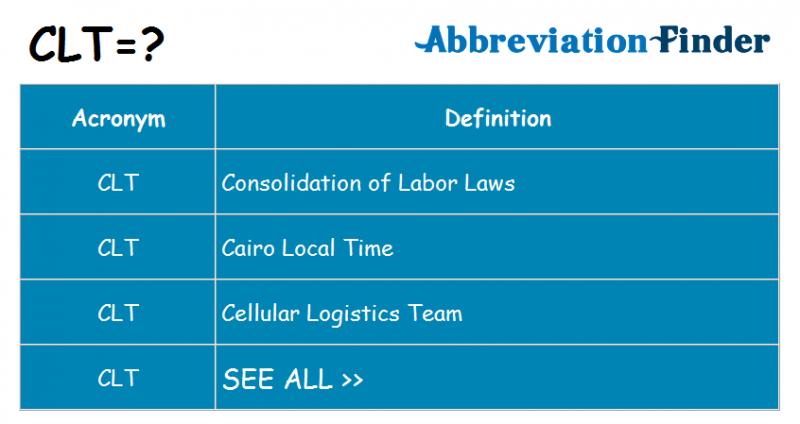
Shaft flex refers to how much the shaft bends when pressure is applied. More flexible shafts will bend more, while stiffer shafts resist flexing. Flex helps generate shot velocity but can reduce control and accuracy if too extreme.
For attack players, more flex allows “whipping” the stick for faster shots. Maverik’s Kinetik attack shafts use carbon bands along the shaft to fine-tune flex zones. Epoch’s Dragonfly Flex line utilizes biased carbon layers to amplify flex while retaining precision.
Midfielders need a balance of flex for power shooting and stiffness for all-around play. Maverik’s Union line features strategically-placed ribbing to guide flex. Epoch’s Dragonfly Pro design uses lightweight aluminum for a responsive feel with accuracy.
Defense players prioritize stiffness to withstand checks but benefit from some flex for clearing power passes. Maverik’s Tank shaft lives up to its name with thick-walled alloy strength. Epoch’s Integra Max cranks up the stiffness for dominating play at the defensive end.
Choosing Your Ideal Flex Profile
Determine how much overall flex you desire versus localized flex zones. Keep these factors in mind when selecting shaft stiffness:
- Your position – Attack needs more flex, Defense needs more stiffness
- Power – More flex adds velocity on shots, passes
- Control – Stiffer shafts provide more accuracy
- Handling – Flexible shafts are quicker, stiffer shafts hold up better on checks
- Comfort – Test different flex profiles to find your ideal feel
High-end shafts from Maverik and Epoch allow customization of flex profiles. Their approach of strategic stiffening maintains precision while optimizing shot speed through focused flex zones.
Attack Shaft Flex Options
Attack players gain a key advantage from increased shaft flex for whipping shots past goalies. The Maverik Kinetik line utilizes carbon bands along the shaft to generate precision flex kick points. This creates boosted velocity while retaining accuracy.
Epoch’s Dragonfly Flex shafts employ directional carbon biasing to really amplify flex. The asymmetric carbon placement caters to an attack player’s shooting grip and arm rotation. More overall flex improves quickness while side-specific carbon tuning maintains precision.
Midfield Shaft Flex and Stiffness

Midfielders need a balance of flex for shooting power and stiffness for all-around play. Maverik’s Union line control flex through ribbed construction along the shaft, which guides bending for precision.
Epoch’s Dragonfly Pro shafts deliver excellent response through lightweight aluminum alloy. Strategic stiffening retains accuracy while the minimal mass aids handling quickness. An affordable price makes it easy for midfielders to own a high performance shaft.
Defense Shaft Stiffness and Durability
Added stiffness strengthens a defense shaft against hacks while providing precision for clearing passes. Maverik’s Tank lives up to its name with super thick alloy sidewalls resisting dents.
Epoch further cranks up the stiffness in their Integra Max line, utilizing enlarged construction for dominating defensive play. The extra-sturdy build allows defenders to clear with confidence and deliver punishing checks.
For Faceoff specialists taking a beating at the X, carbon fiber shafts like Warrior’s Warp provide a nice blend of stiffness with lightness. The stiff carbon resists bending while strategic layering creates durability.
Get the Right Flex to Unlock Your Skills
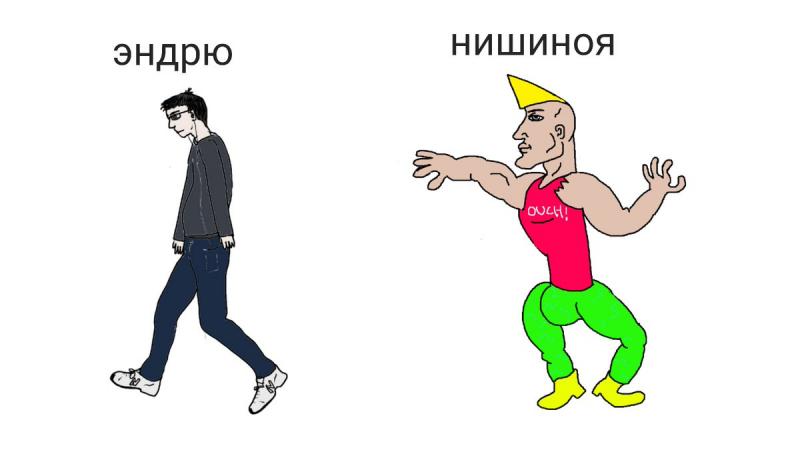
Having a shaft tuned to your ideal flex profile gives a real performance edge. Work with your needs of your position and playing style to determine the right balance of flex and stiffness.
The advanced engineering by brands like Maverik and Epoch remove guesswork by strategically integrating flex while optimizing response. A shaft with the perfect flex aligns with your game for next-level play.
When selecting a new lacrosse head, one of the key factors is the head shape. Heads come in pinched, mid, and wide styles – each optimized for different playing positions and styles. Understanding the pros and cons of different head shapes will help you choose the best option.
Head Shapes – Pinched, Mid, Wide
Pinched lacrosse heads have the narrowest dimensions and tightest pocket area. They provide superior ball control and quick release passing and shooting. The compact profile gives precision but lacks some of the defensive capabilities of wider heads.
Mid-sized heads offer a middle ground between pinched and wide versions. Moderate width and pocket area balance offensive control with defensive abilities like ground balls. Mid-shaped heads work well for all-around players.
Wide lacrosse heads provide a deep pocket area and expanded catching surface. The extra width aids in checking, intercepting passes, and scooping up ground balls. Wide heads lack some of the offensive precision of more pinched versions.
In general, more narrow heads excel for offensive players while wider heads are ideal for defense. Midfield players can benefit from either mid or moderate wide heads. Faceoff specialists also need added width to cover ground balls.
Pinched Heads for Accuracy
The tight pocket and streamlined profile of a pinched head provide quick passing, precise shooting, and exceptional ball control. These attributes make pinched heads perfectly suited for attack players.
Heads like the Epoch Dragonfly Elite have a narrowly tuned design allowing attackers to thread tight passes through traffic into the crease area. The ECD Rebel offenses also keeps the ball locked in during dodging runs.
Balanced Control in Mid Heads
Midfield players gain a versatile stick with a mid-sized lacrosse head. The moderate width better retains ball control on faceoffs and when getting pushed by defenders.
The Maverik Optik mid-profile head provides excellent feel and responsiveness for midfield play. Its design focuses control while still allowing wide catches and checking ability. For midfield dominance, the Warrior Evo 4 Pro comes correct with ideal mid-width performance.
Added Width in Wide Heads
Defensemen and faceoff specialists need the extra width of a wide lacrosse head. The expanded surface area improves ground ball scooping and intercepting passes.
Warrior creates elite wide heads like the Burn FO-X specifically for faceoff excellence. The extra sidewall flare helps grab every loose ball. For defense, Maverik’s Tank delivers maximum ball retention after checks to spur fast breaks.
Find Your Ideal Head Shape and Size

The right lacrosse head shape ultimately depends on your playing style and position. While shapes exist on a spectrum, the main categories of pinched, mid, and wide cover most players’ needs.
Practice with different head shapes if possible to determine your preference. A pinched head excels for precise offense while wider heads flourish on faceoffs and defense. But focus on finding the ideal feel and performance first, regardless of shape names.
With the constant evolution of head designs from brands like Epoch, ECD, Maverik, and Warrior, there are now more choices than ever. Keep an open mind to find your next high performance head, no matter its shape designation.
When choosing a new lacrosse head, one key factor is the head style – either offset or straight. Understanding the strengths of each allows you to select the best option for your position and playing style.
Head Styles – Offset, Straight
Offset lacrosse heads angle the sidewalls forward from the bottom of the head. This increases the pocket depth while lowering the ball position in the head. Offset provides excellent ball control for cradling but can slow down passing.
Straight lacrosse heads do not angle forward the sidewalls, keeping the pocket area flat and even. This makes for quick passing and shooting but less ball control during cradle carries. Straight heads are rare in newer designs.
In general, offset heads are ideal for attack players who benefit from maximized ball retention when being checked by defenders. Straight heads excel for midfield transition play where fast passing is key.
Benefits of Offset Heads
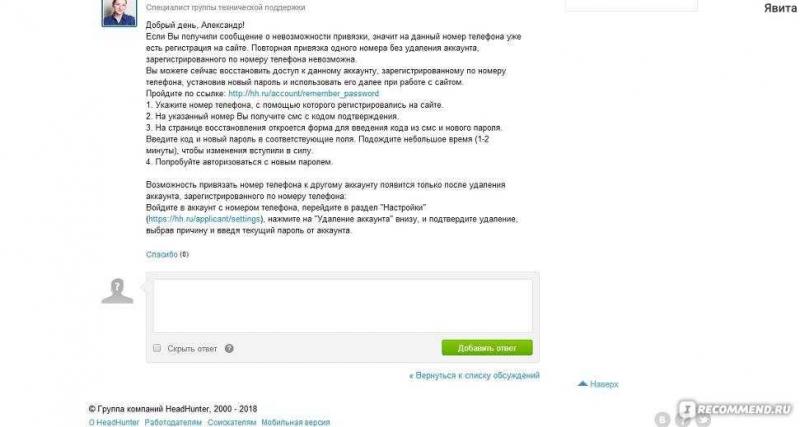
The angled sidewalls of an offset head allow for a deeper pocket, ensnaring the ball in the mesh during runs and checks. Offset improves control for attack players navigating through traffic in tight spaces.
Heads like the Warrior Evo 5 Pro have specialized offset profiles to cradle smoothly. Maverik’s Optik lacrosse head optimizes offset design for quick yet controlled playmaking.
Another advantage of offset is power on checks. More surface area contacts the ball at impact when checking, making it harder for ball carriers to retain possession.
Advantages of Straight Head Design
Straight lacrosse heads maintain a flat frame shape instead of angling forward at the base. This leads to very lively ball handling with crisp, quick passes and shots.
The STX Stallion 700 head delivers awesome quick-release play with its straight rail design. ECD’s Rebel offense series keeps the pocket centered for lightning fast throwing and shooting.
While rare in newer head designs, straight heads are great for transition midfielders moving the ball fast up-field. Their lively action also benefits experienced players with excellent fundamentals.
Choosing What’s Right for You
While offset dominates current head designs, straight heads still have their place in the game. Make your choice based on your position and style.
For attack or defensive players who benefit from control during carries, offset is likely the better fit. Midfielders moving the ball in transition can take advantage of the crisp passing and shooting of a straight head.
If possible, try out heads with different styles to get a feel for each. While offset may be the popular choice, keep an open mind. Lacrosse is constantly evolving, creating new head shapes that blur style lines.
Focus on your skills and finding a head that becomes an extension of your game. With top brands like Maverik, Warrior and ECD pushing designs, there are options aplenty to unleash your potential.
Tuning your lacrosse stick pocket is key for maximizing ball control, passing, and shooting. Pockets come in mid, low, and high styles – each with their own strengths. Choosing the right pocket style aligns with your skills and position on the field.
Pocket Style – Mid, Low, High

Mid lacrosse pockets place the ball near the midpoint of the head when at rest. This provides a nice blend of ball retention and quick release. Mid pockets work well for all-around players.
Low pockets position the ball much closer to the bottom of the head. This makes for excellent ball control during cradling but sacrifices some passing and shooting speed.
High pockets elevate the resting ball position much closer to the scoop. The steep channel provides lightning fast passing and shots but with less control during carries.
In general, attack players favor low or mid pockets for control around the crease. Midfielders need a mid pocket balance while defense and faceoff players turn to mid or high pockets for quick transitions.
Low Pocket Control and Feel
The deep setting of a low pocket gives unmatched control during cradling and contact. Attackers and dodging middies retain possession through traffic going to the cage.
StringKing heads excel with defined low to mid pocket construction. ECD heads like the Rebel allow fine tuning pockets from low to mid styles with excellent hold.
While not the quickest release, low pockets let you hang on to the ball when getting whacked by defenders. The right depth improves feel on snagging off-target passes as well.
Mid Pocket Versatility

A mid pocket provides the best blend of hold during carries combined with quick passing and shooting ability. That’s why middies love the versatility of a mid pocket setup.
Heads like the Maverik Optik and Warrior Evo 4 Pro come designed to optimize mid pocket performance out of the box. Their shape holds a mid pocket comfortably while still releasing smoothly.
Midfielders running both ways benefit most from a mid pocket. It gives ample cradling control but gets the ball out fast when needed.
Quick Release from High Pockets
High lacrosse pockets pop the ball right out with the flick of the stick. This caters perfectly to faceoff players and defense looking to push transition.
Warrior’s Burn FO-X head provides awesome high pocket performance for faceoff excellence. Its pinched scoop and sidewall design launches ground balls downfield off the clamp.
While sacrificing some control, the whippy action of a high pocket generates lightning fast passes, shots, and clears. The right depth improves off-center ball snagging as well.
Find Your Ideal Pocket Depth
Work with your team position and style of play to determine the ideal pocket depth. Shallow high pockets enable quick sticks while low pockets maximize cradle control.
Don’t just copy teammates’ pockets either. Take the time to string, experiment and tweak your pocket until the stick feels like an extension of your arm. Having the right personal pocket elevates your level of play.
The mesh used to string your lacrosse stick pocket impacts handling, control, and release. Traditional types work well for most players, but specialty meshes exist for artificial turf and all-weather durability.
Mesh Types – Traditional, Artificial Turf, Hard Mesh
Traditional lacrosse mesh uses a soft, flexible nylon material. The threads act like tiny trampolines to cradle the ball evenly across the pocket. Traditional mesh conforms to your style over time.
Artificial turf lacrosse mesh utilizes a slick, slightly harder nylon. Less friction grabs the surface for crisp passes and shots off turf fields. The smoothness resists snagging in the turf fibers.
Hard mesh lacrosse heads substitute solid nylon for the traditional woven soft mesh. Hard mesh keeps its shape and provides a very consistent pocket. It lacks the custom feel of softer meshes over time though.
In general, most players do well with a high quality traditional mesh for responsive pocket feel. Those playing primarily on turf may want a specialized artificial turf mesh material. Hard mesh works for players seeking a permanently consistent pocket shape.
Benefits of Traditional Lacrosse Mesh
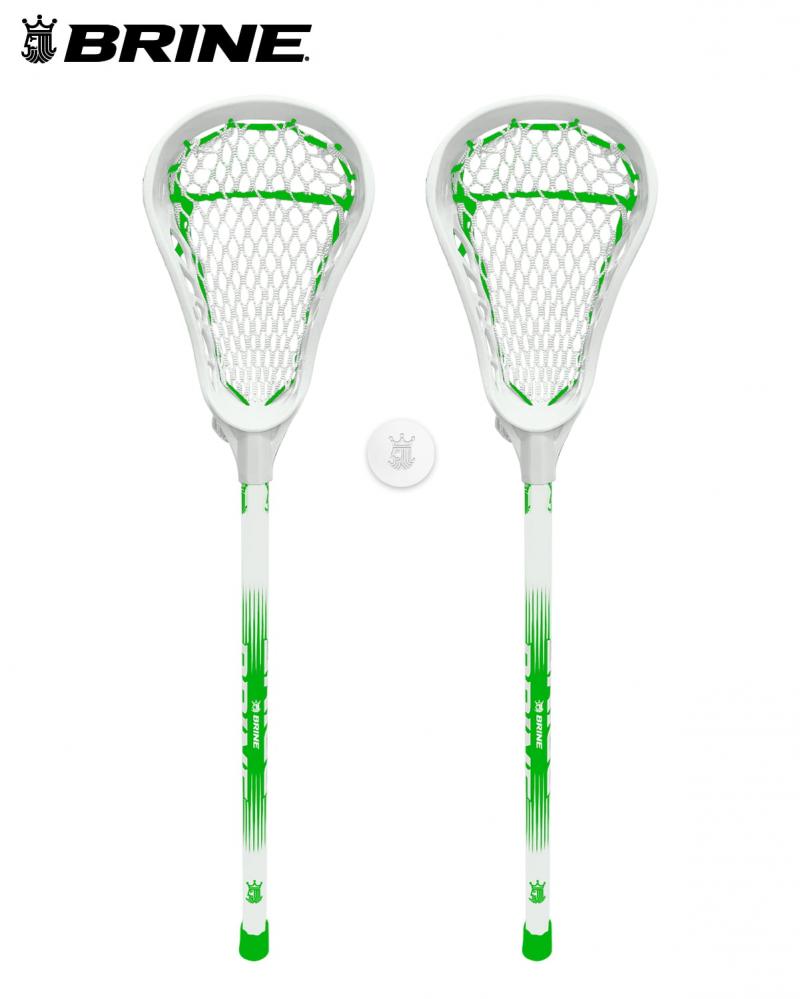
The soft, flexible nature of traditional woven mesh cradles balls smoothly. As you wear in your pocket, the natural materials conform to your style for excellent customized feel.
High end leathers from StringKing, Jimalax, and ECD become buttery soft yet retain durability. Traditional nylons like HeroMesh offer affordable performance for any level of play.
Pockets strung with traditional mesh will soften up over time but still provide great responsiveness as the materials adjust to your game. The natural feel simply can’t be replicated.
Using Artificial Turf Lacrosse Mesh
For players competing on artificial turf fields, a specialized turf mesh helps optimize performance. The slick coating prevents the turf fibers from snagging in the pockets during play.
StringKing’s Type 3 nylon thread offers awesome consistency and durability to stand up to abrasive turf. ECD’s Rebel Turf Mesh has a polished coating to handle turf friction for crisp handling.
While not as supple as traditional mesh, today’s turf mesh materials retain excellent feel. The coatings continue improving to mimic the softness while preventing turf snags.
Benefits of Hard Lacrosse Mesh
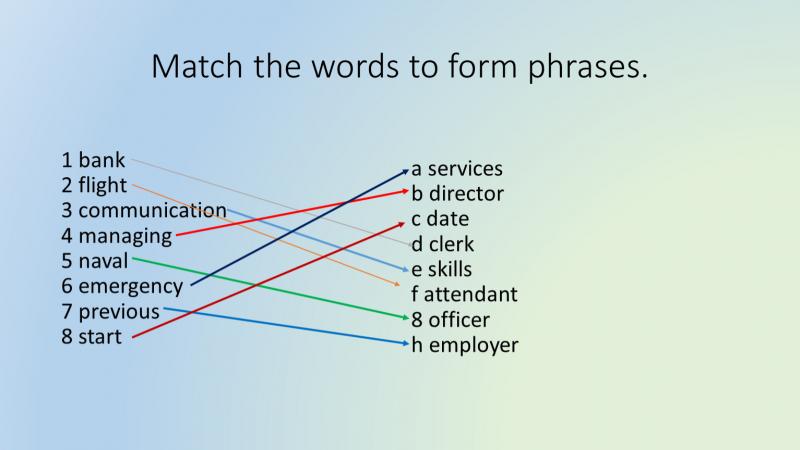
Hard mesh utilizes solid materials in place of traditional soft woven mesh. It holds its shape consistently and provides very uniform pocket structure. The solid construction also improves all-weather durability.
Maverik’s Memory Mesh provides awesome shape retention needed for faceoffs and ground balls. StringKing’s Type 3F nylon hard mesh cranks up slippery durability. ECD’s BlastMesh performs well in all conditions.
While not as customizable as soft mesh, hard mesh is a great option for players prioritizing consistent pockets in all conditions. The advanced materials play well in any environment.
Find the Right Mesh for Your Style of Play
Factor in the level you play at and type of fields used when selecting mesh. Most will do well with traditional for great natural feel. Those playing high school or college on turf may need a turf-specific mesh.
Don’t just copy teammates either, as everyone has unique preferences. Experiment to experience how the different meshes string, break in over time, and handle on your particular fields.
When assembling your complete lacrosse stick, dialing in the right length and weight combination is key. The optimal dimensions and balance align with your position, height, and strength.
Length & Weight Considerations
Longer sticks provide wider checking angles and added reach for intercepting passes. Shorter sticks allow tighter cradle control. Finding the right length depends on your playing style and position.
Heavier setups bring momentum for powerful checks. Lighter sticks enable quick stick passes and shots. Determine the balance you need between maneuverability and mass.
For starters, factor in your size and strength. Smaller players need lighter sticks that match their physique. Bigger, stronger athletes can handle more mass for physical play.
Also consider the level you play at. High school, college, and pro players will need longer and stronger sticks to compete against other high caliber athletes.
Length and Weight for Attack
Attack players can get by with shorter and lighter sticks for precision passing and shooting in tight spaces. Sticks from 60-72 inches give the quickness to dodge checks inside.
Lightweight metal alloy or composite shafts work well for attack. Heads with tight pockets like the ECD Rebel further accuracy. Keeping the setup under 2 lbs aids in fast releases and cuts.
Balanced Length and Weight for Middies
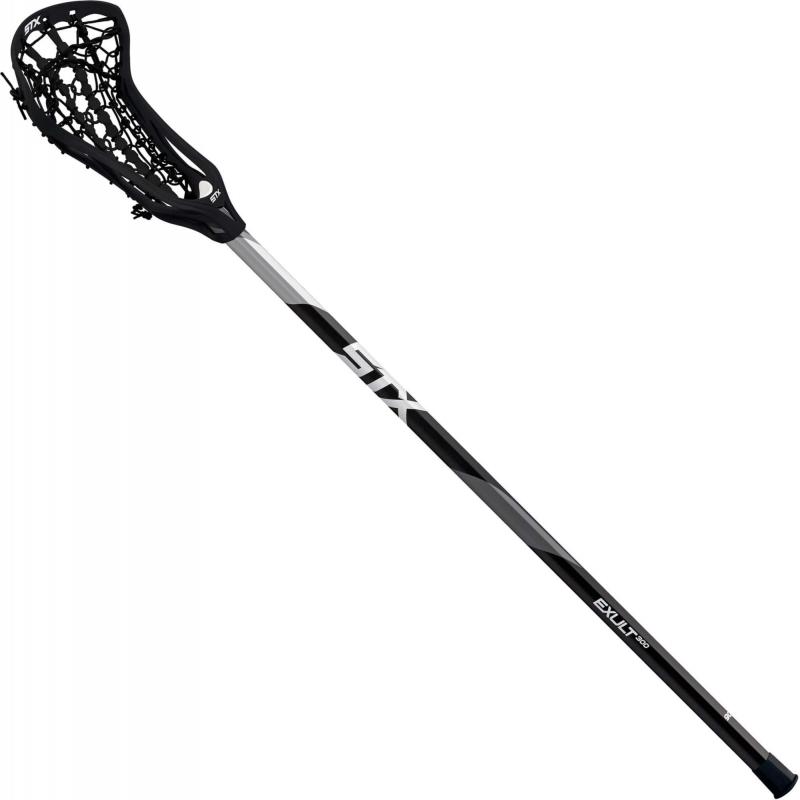
Midfielders need length for solid poke checks but can’t sacrifice too much quickness with an ultra long stick. Ideal midfield stick length is 60-72 inches to play both ends.
Shafts right around 30 inches with mid-weight construction balance speed and checking ability. Maverik Union shafts do well for transition middies. Head weight around 5 ounces retains versatility.
Max Length and Weight for Defense
Defenders rely on long sticks from 72-84 inches for angled poke checks and intercepting passes. Extra length creates wider defensive zones.
Sturdy alloy or composite shafts over 32 inches enable strong checks. Heads with stiffness like the Maverik Tank get the ball off the turf. Setup weight can range from 22-28 ounces to overpower dodgers.
Find Your Ideal Balance
The right lacrosse stick length and weight balance caters to your position and physique. While trends exist, don’t just copy teammates.
Test different setups with pocket styles and accessory weights. The complete feel in your hands trumps measurements. Finding your ideal balance of maneuverability and heft elevates your level of play.
When equipping yourself as a lacrosse goalie, you need a stick tuned specifically for the position. Goalie heads and shafts differ from field lacrosse sticks in key ways to aid in stopping shots.
Goalie Sticks vs Field Sticks
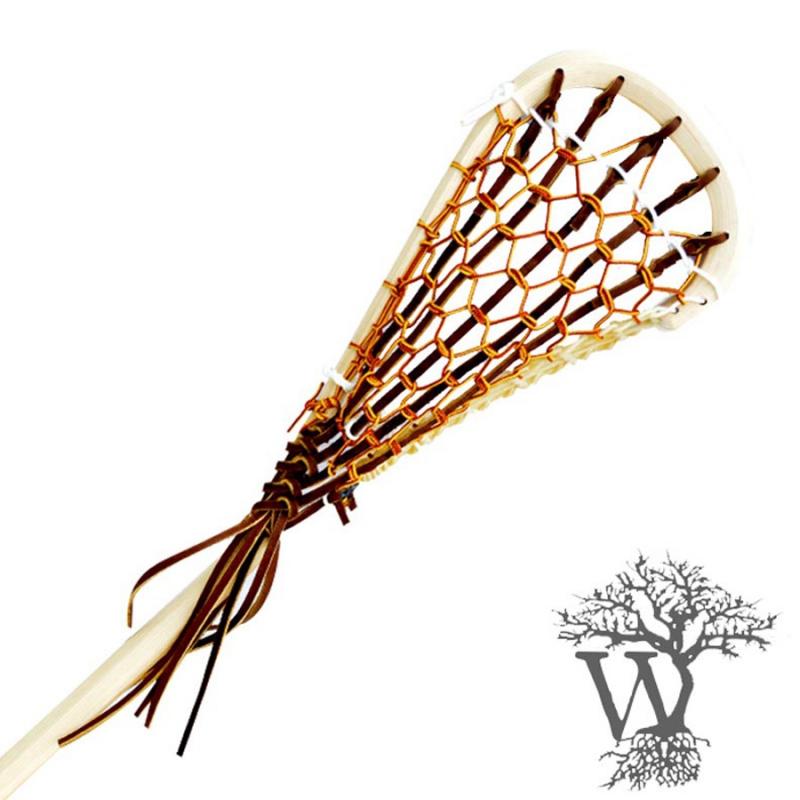
The heads on goalie sticks are extra wide to provide maximum surface area for blocking shots. Widths up to 15 inches allow goalies to protect more of the net. The deeper pocket also helps trap rising shots.
Goalie shafts are also specialized with extra length and improved durability. Lengths from 40-72 inches give goalies an expanded blocking reach. Sturdy construction withstands high-velocity shot impacts.
For field players, sticks center on quick passing, shooting, and checks. Narrower heads deliver precision while shorter shafts allow tight stick work. Lightweight builds cater to finesse over power.
While field sticks maximize feel and ball skills, goalie sticks prioritize blocking ability. Their specialized designs give goalies the tools needed to deny goals.
Heads Designed for Saving Shots
Extra wide lacrosse heads are specially shaped to meet the needs of goalies. Wider heads give goalies more blocking coverage across the cage.
StringKing’s oversized Goalie head provides maximum ball stopping surface area. Maverik’s Rome goalie head widens at key areas for quick reaction saves.
Flared sidewalls on goalie heads trap rising shots in the deep pocket. Pinching at the scoop helps grab high launches before they go in the net.
Shafts Built for Goalie Durability
Goalie shafts give players the added length to protect more of the net while withstanding shot impacts. Special coatings prevent wear and improve grip.
StringKing’s Goalie Pro length shafts extend a goalie’s range. Maverik’s Viper goalie shaft uses reinforced alloy for impact absorption when blocking shots.
The extra thickness of goalie shafts makes saves sting less while giving goalies the power to throw crisp outlet passes after saves.
Finding the Right Goalie Setup
Factor in your height, skill level, and age when selecting goalie gear. Youth goalies may not need extreme widths or lengths tailored to elite players.
Don’t forget other protective goalie gear either. A well-fitting chest protector works with your stick to fend off shots. Snug gloves allow confident catches of hard shots.
With goalie-specific sticks and protective gear, you’ll have the tools needed to command the crease. Dialing in your setup gives the confidence and ability to stone cold shooters.
While the sport shares similarities, key differences exist between boys and girls lacrosse sticks. The specialized designs cater to the different rules, styles of play, and physiques in boys and girls lacrosse.
Boys vs Girls Sticks
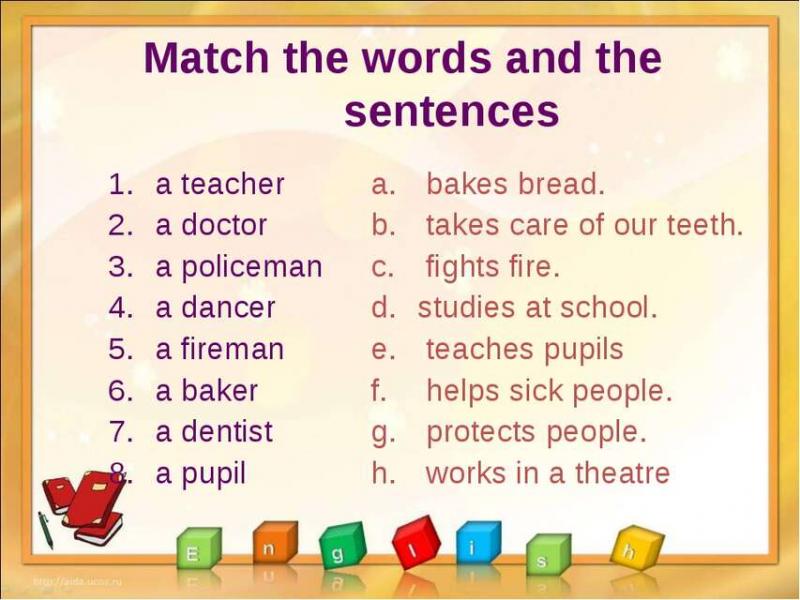
The most noticeable difference is pocket depth. Boys sticks feature deeper pockets for superior ball control and possession. Girls sticks have shallow pockets for quick passing and shooting.
Boys sticks are also typically longer and heavier to aid in checking. Girls sticks utilize lightweight constructions for speed and finesse over power.
While heads look similar, sidewall stringing and pocket placement differ based on gender-specific rules and techniques. Boys favor accuracy, girls emphasize pace.
At higher levels, specialized sticks for each gender are a must. But beginners can still perform with a quality all-around stick in either boys or girls play.
Features of Boys Lacrosse Sticks
Legal boys sticks optimize ball control for possession play with deep pockets, precise scoops, and sturdy sidewalls.
Heads like the Maverik Optik and Epoch Dragonfly allow maximum pocket depth for cradling through contact. Their sidewall stringing caters to accuracy.
Boys lacrosse shafts emphasize durability for physical checks. Solid alloy or composite materials withstand hacks and pokes during play.
Elements of Girls Lacrosse Sticks
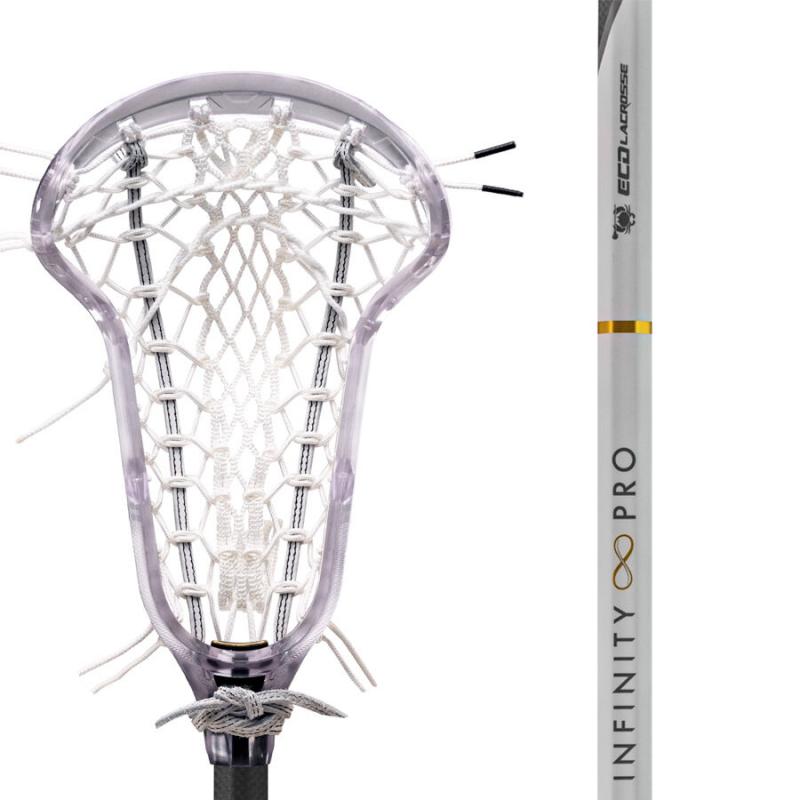
With possession rules differing for girls, their sticks focus on quick ball movement with shallow pockets and lightweight builds.
Heads like the STX Crux 600 have defined pockets optimized for fast passes and shots on goal. The stems are also narrower for reduced weight.
Girls shafts utilize ultra-lightweight alloy or scandium blends. The attenuated handles maximize passing speed and shot velocity.
Finding the Right Stick
Ultimately, find the stick that performs best for you, regardless of gender-marketing. While their specialized designs excel, don’t limit your options.
For girls seeking accuracy, a boys stick with defined pocket could work well. Boys looking for lightweight finesse may flourish with a girls model.
While top players need specialized gear, stick with universal fundamentals first. Fit, skills, and personal style should drive your selection process.
With the right stick for your game, you gain the tools and confidence to elevate your play. Lacrosse keeps evolving and so should your thinking on equipment choices.
When selecting lacrosse sticks and gear, you must ensure your setup adheres to the specific regulations for your league, gender, and age level. Understanding the rules helps optimize performance while staying within legal limits.
Stick Regulations & Rules
Boys lacrosse sticks have defined legal dimensions for length, head width, pocket depth, and sidewall stringing. Girls sticks adhere to slightly different specifications catered to their game.
Youth leagues often have additional stick requirements beyond high school, college, and pro. Check with your specific league before assuming regulations align across levels.
While rules aim to ensure safe and fair play, they can differ between leagues. Look up the exact regulations to get the most out of new gear purchases.
High School and College Rules
The NFHS and NCAA outline stick rules for boys and girls lacrosse at the high school and college levels. Legal sticks maximize control while preventing excessive dimensions.
For example, boys sticks must be 40-72 inches long. Boys heads can be 6-10 inches wide and pocket depths are limited. Sidewall stringing must adhere to certain gap minimums as well.
Girls sticks can be 35.5-43.25 inches long. Their heads and pockets also have defined legal dimensions to ensure balanced play.
Youth Lacrosse Stick Rules
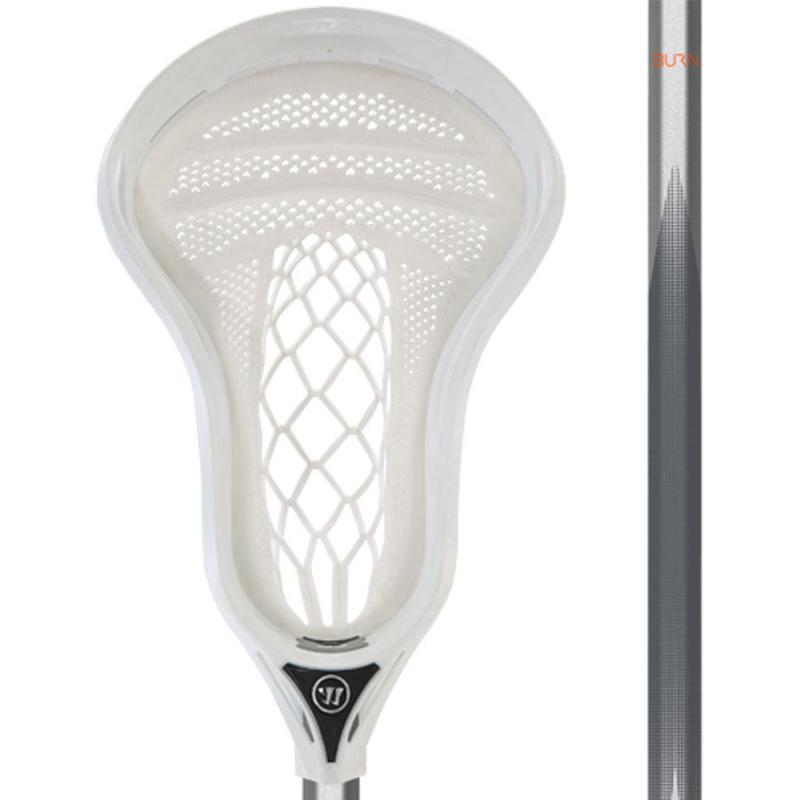
Youth and child lacrosse leagues often have additional stick rules to match young players’ physiques and developing skills.
For example, U15 boys sticks have an even smaller legal range of 52-72 inches. Youth girls stick lengths max out shorter than high school regulations as well.
Pocket depths, sidewall stringing, and head dimensions also adhere to more defined ranges. Review youth league rules before assuming regulations align with high school.
Getting the Right Stick
When buying a new stick, find one maximizing your performance potential while meeting regulations. Manufacturers design top sticks specifically to push the boundaries of legal dimensions for any level.
If unsure, steer clear of any gray areas that could put you at risk of using an illegal stick. Referees can check sticks before games and hand out severe penalties for noncompliance.
Knowing the regulations gives confidence you’ll perform at your highest level with a legal stick. Rules keep evolving, so stay updated as you reach new levels in the game.
Getting your lacrosse stick strung with the ideal pocket is key for maximizing performance. While DIY stringing is possible, pro shops offer expertise to dial in pocket perfection.
Stick Stringing & Pockets – DIY or Pro Shop?

Pro shops have experienced stringers with advanced techniques for high performance pockets. Their deep meshes, intricate sidewall lacework, and pro drills create next-level pockets.
DIY stringing lets you learn at your own pace for a custom feel. But mastering advanced techniques and unique knots takes time. Pro shops cut down on frustration and trial and error.
While DIY appeals to many, pro shops are absolutely worth the investment if you play competitively. The precision tuning aligns your stick to elevate skills.
Benefits of Pro Shop Stringing
Pro shop stringing maximizes pocket performance through precision work not easily replicated at home. Their deep bags of premium mesh, professional grade tools, and compound threads yield masterful results.
Advanced techniques like stacking, double ladder lacing, and triangle top strings create defined structure. Meticulous attention to sidewall lace angle, knot positioning, and shooting string placement optimize pocket responsiveness.
A pro shop expertly tunes the pocket based on your position, playing style, and league rules. Years of stringing give them the skill to make pockets sing.
Pros and Cons of DIY Stringing
Stringing your own stick teaches you how pocket components come together for a fully custom feel. With practice, you can achieve high quality pockets.
But be prepared to tinker as you learn. Following online guides and teammates’ advice only goes so far. Developing pro-level techniques takes real dedication over years.
DIY appeals to many players’ sense of personalization and craftsmanship. Just know that your pocket’s full potential may take substantial time to unlock.
Getting the Best Pocket for Your Game
Ultimately, choose the option giving you the most responsive, game-elevating pocket possible. For most competitive players, that means pro shops.
If you play for fun or are on a tight budget, DIY can be rewarding. But to truly maximize your talents, consult a professional stringer.
Your stick becomes an extension of you on the field. Getting it professionally strung provides an advantage to showcase skills at the highest level.
When searching for your next high performance lacrosse stick, you can’t go wrong starting with the top brands in the game. Maverik, STX, Warrior, Brine, and Epoch engineer cutting-edge sticks showcasing the latest technologies and materials.
Top Brands: Maverik, STX, Warrior, Brine, Epoch
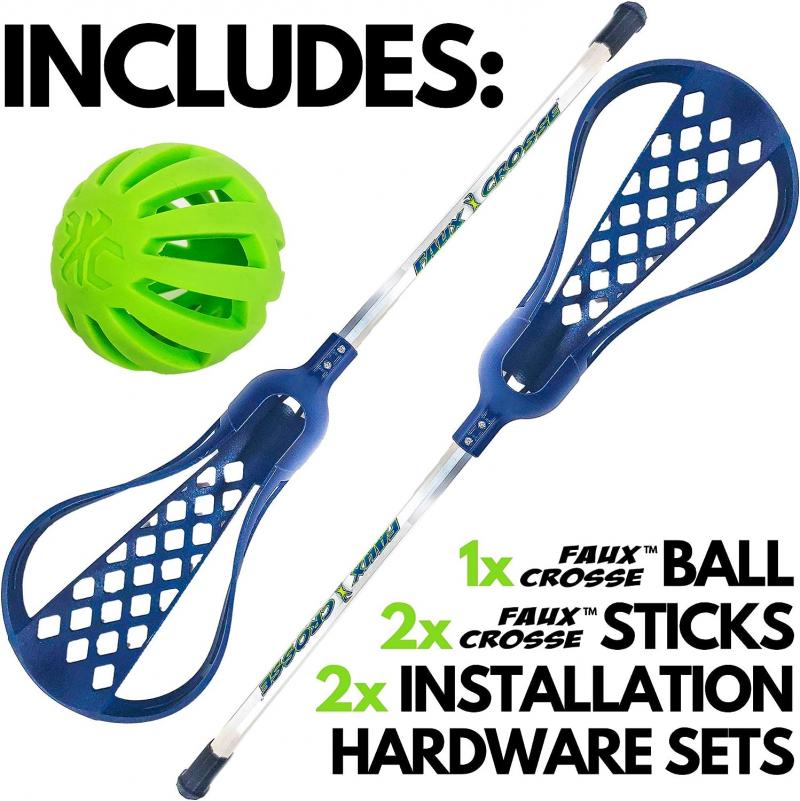
Maverik sticks highlight innovation with their thinner and lighter “TruOffset” optimized head design. The MetaFlex shaft combines titanium alloy and carbon fiber for an elite lightweight construction.
STX focuses on truly tuning pocket precision across their lineup. From traditional meshes to specialized turf strings, STX perfects accuracy through pocket engineering.
Warrior leverages elite carbon fiber technologies for directional stiffness in their Warp shafts. Their stick lines like Evo and Burn cater from faceoffs to offense.
Brine sticks emphasize consistency with strategic sidewall stringing and Mid/Low pocket placement. The King line offers versatility while Dictator increases hold and control.
Epoch Lacrosse sticks deliver pro-level performance even down to youth sticks. Their Integra line brings next-level alloy durability from defense to faceoffs.
Choosing Based on Position
With their engineering expertise, these brands design sticks aligning with needs across positions. Their catalogs showcase specialized heads and shafts for every style of play.
For attack, Maverik Kinetik and Epoch Dragonfly provide accuracy and ball control. STX Crux heads excel at quick passing and shooting in tight spaces.
Warrior Evo heads give midfielders versatility for transition play. Brine Clutch shafts generate speed and crisp feeds up-field.
Defense and faceoff specialists can turn to Maverik Tank or Epoch Integra for checked-stopping durability. Warrior Burn FO shafts win ground balls.
Choosing Based on Personal Preference
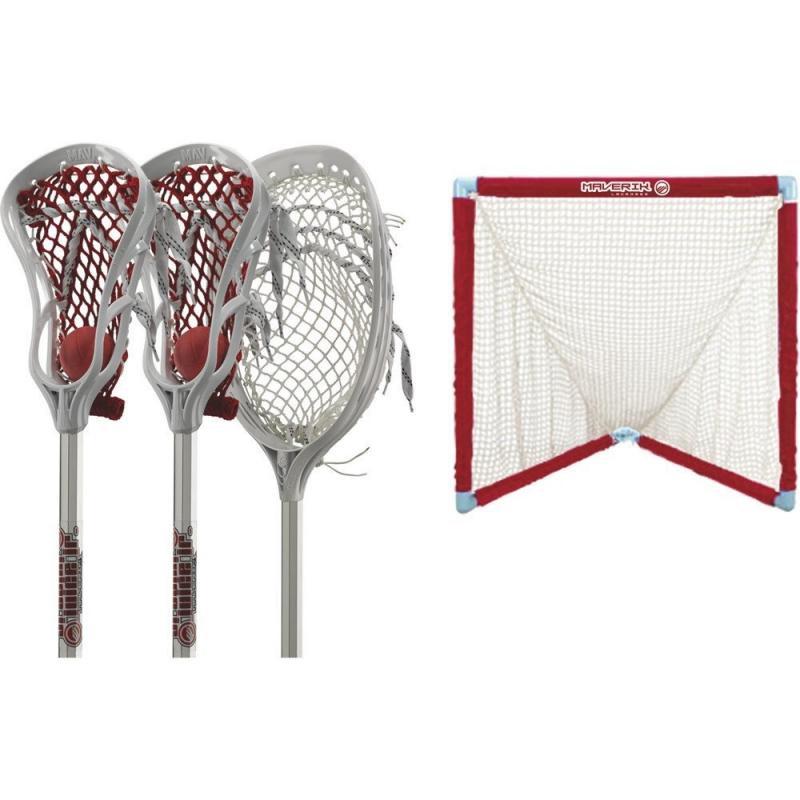
While these brands make gear for every position, choose based on your personal fit, feel, and performance needs first.
Test different brands to get a sense for their unique technologies and designs. Maverik offers lightweight precision while Warrior harnesses carbon fiber power.
Consulting athletes sponsored by these brands can provide additional insights on real game performance. Ultimately though, go with what feels best guiding your talents.
With so many lacrosse stick options on the market, narrowing down your choice can be tricky. Keeping your specific position, skills, and budget in mind helps select the optimal setup.
Choosing What’s Right For You – Position, Skill, Budget
Your position dictates the stick performance you need. Attack players need quick passing and shooting. Defense relies on checks and ground balls. Goalies require expanded blocking coverage.
Skill level impacts ideal features too. Beginners need versatility and durability. Elite players gain advantages from advanced technologies and materials providing pinpoint accuracy.
Budget plays a role as well. While pro-level sticks utilize cutting-edge construction, excellent mid-tier options deliver quality without breaking the bank.
Thinking through these individual factors helps narrow your choices to dial in the perfect stick to unlock your potential.
Sticks for Attack Players
Attackers benefit from quicker sticks for tight dodges and passing around the crease area. Heads with mid to low pockets maintain control while shorter shafts allow tight stick work.
Elite attack sticks include the Epoch Dragonfly Elite head and Maverik Kinetik shaft. For value, the StringKing Complete Attack brings accuracy.
Sticks for Defense Players
Defense relies on long sticks for Checking angles and scooping ground balls. Wider heads and thicker shafts endure physical defensive play.
The Warrior Regulator Elite D head excels for ground balls and checks. The Maverik TankGoalie shaft brings next-level durability. For value, StringKing offers the Workhorse D long pole.
Sticks Based on Skill Needs
Less experienced players need versatile sticks covering all facets of the game. Advanced users look to specialized heads and shafts aligning with personal playing style.
For beginners, the ECD Carbon Pro 2.0 balances performance across positions. The cutting edge Maverik Kinetik caters to elite attack players.
Sticks to Fit Every Budget
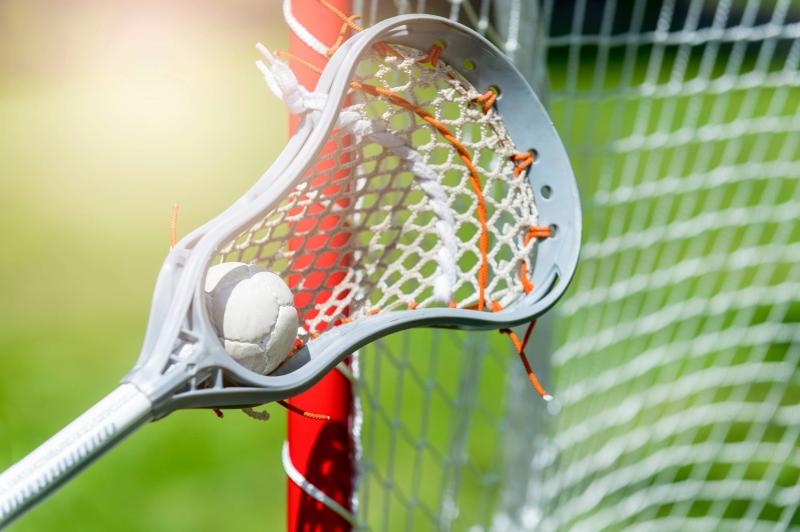
While pro-level gear brings premium technologies, excellent sticks at lower price points still offer quality. Prioritize needs, then get the most features possible for your budget.
The Maverik Centrik delivers performance for only $50. The Warrior EvoNext Pro head brings high-end quality for half the cost of elites. Spending more gets added tech, but value exists at all levels.
